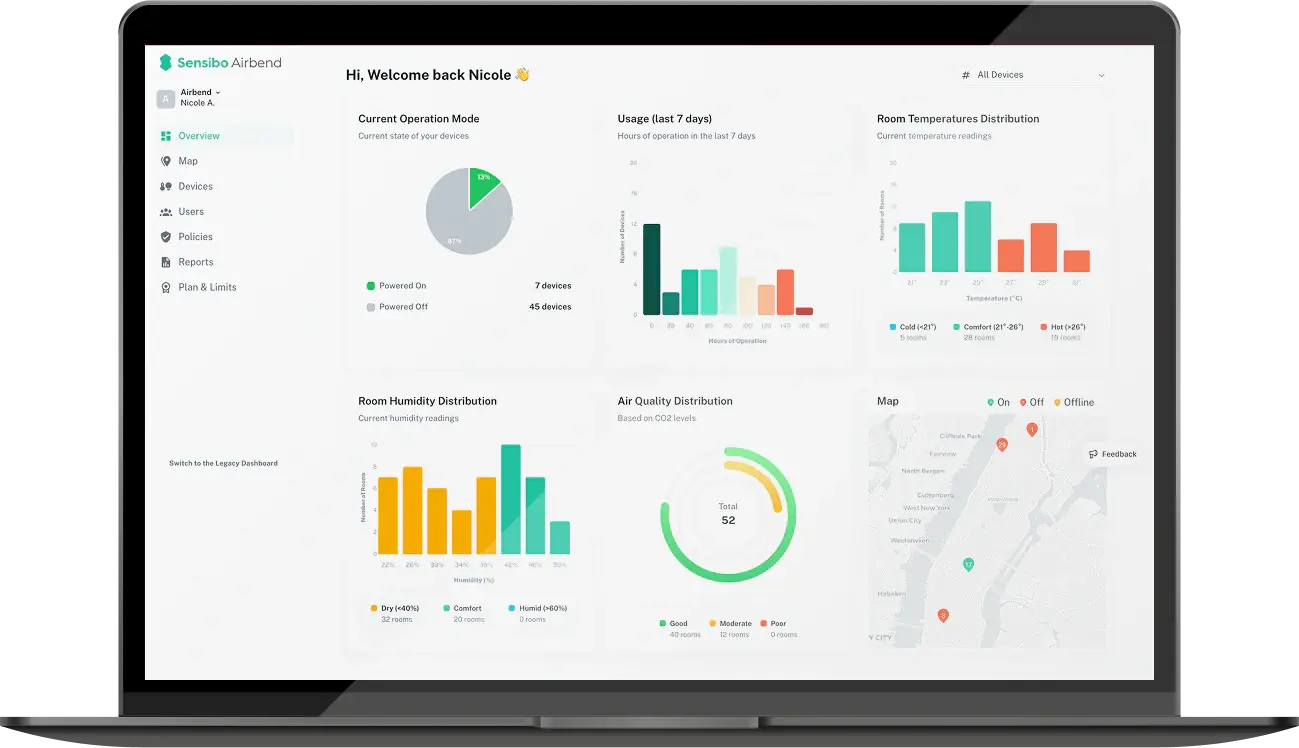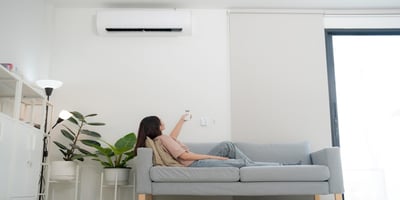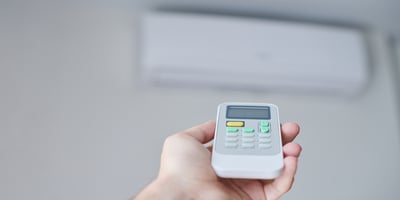How to Keep House Cool in Summer Without Breaking the Bank
Key Takeaways
- Reflective Window Films can reduce heat gain by 80%, keeping your home cooler.
- Ceiling Fans can make rooms feel 3-7°F cooler, allowing higher thermostat settings.
- Sealing Air Leaks helps prevent cool air loss and improves comfort.
- Programmable Thermostats optimize cooling and reduce energy bills.
Keeping your home cool in summer doesn't have to break the bank. There are several effective and budget-friendly ways, such as using fans, closing curtains, and managing ventilation efficiently. These simple methods can help maintain comfort without increasing your electricity bills.
Why Your House Becomes a Furnace
Three main culprits turn homes into ovens:
- Solar heat gain through windows (especially south/west-facing)
- Poor insulation is letting hot air seep in and conditioned air escape
- Heat-generating appliances like ovens, dryers, and electronics
Your roof absorbs solar radiation all day, transferring heat downward through ceiling materials. Without proper ventilation, attics trap hot air that prevents effective cooling circulation. Dark-colored surfaces amplify heat absorption - black roofs can reach 180°F on 90°F days while single-pane windows concentrate solar energy into living spaces.
Master Your Windows: Block Heat Before It Enters
Step 1: Install reflective window film on problem windows - cuts heat gain by 80%
Step 2: Time your window coverings - close before sunrise, open when outdoor temps drop below indoor temps
Step 3: Create cross-ventilation - open windows on opposite sides during cool hours
Light-colored treatments work better than dark ones. Exterior shading (awnings, trees) beats interior solutions because it blocks heat before it reaches the glass.
Pro tip: Position fans near open windows to pull cool air inside while pushing warm air out.
Static cling window films cost $1-3 per square foot for DIY installation. Exterior roller shades drop surface temperatures by 20-40 degrees compared to interior treatments. Open windows when outdoor temperatures drop 5-10 degrees below indoor levels - typically 2-4 hours after sunset.
Fan Strategies That Actually Drop Temperature
Ceiling fans make rooms feel 3-7 degrees cooler through the wind chill effect. Set the blades counterclockwise in summer to push air down. This lets you raise thermostat settings 4-6 degrees while staying comfortable.
Whole-house fans installed in attics cost a fraction of AC units but provide serious power for cooling home spaces. They suck hot air up and out while drawing fresh air through windows.
Box fan placement matters:
- Intake fans near cool sources (basement windows, shaded areas)
- Exhaust fans near heat sources
- Coordinate airflow patterns throughout your home
Evaporative cooling fans work magic in dry climates, dropping air temperature 10-20 degrees through water evaporation.
Proper ceiling fan sizing: 52-inch fans for rooms up to 400 square feet, 56-inch fans for larger spaces. Whole-house fans require 1-2 square feet of attic ventilation per 750 CFM capacity. Create "thermal chimneys" by placing exhaust fans in upper windows and intake fans in lower openings.

Seal the Leaks: Stop Paying to Cool the Outdoors
Your home bleeds cool air through gaps you can't see. Weather stripping around doors/windows plus caulk around frames creates immediate improvements.
Focus areas for air sealing:
- Attic access points
- Electrical outlets
- Plumbing penetrations
- Basement rim joists
R-38 attic insulation creates thermal barriers that reduce AC cost substantially. Duct sealing ensures conditioned air reaches rooms instead of escaping into walls.
Attic bypasses account for 30-40% of air leakage in typical homes. Focus on recessed lights, plumbing stacks, and electrical penetrations first. Expanding foam sealants work well for large gaps but shouldn't contact electrical wiring. Professional duct sealing addresses 15-25% of conditioned air lost through connection points and fabric leakage.
Smart Thermostat Tricks That Slash Bills
Program temperatures 7-10 degrees higher when nobody's home. Achieve energy-saving cooling through:
- Pre-cooling cycles before you return
- Higher settings during peak rate hours
- Zone cooling (close vents in unused rooms)
Monthly filter changes during peak season keep systems running efficiently. Clean condenser coils annually - dirty coils force systems to work 15-20% harder.
Create multiple daily schedules for weekdays vs weekends. Time-of-use electricity rates can triple during peak hours (typically 2-7 PM). Pre-cool homes to 72-74°F before peak periods, then raise settings to 78-80°F during expensive hours. Simple zone control includes closing vents in unused rooms and installing door fans for improved circulation.
Alternative Cooling: Beyond Traditional AC
Ground source cooling uses stable soil temperatures 6-8 feet underground. Simple earth tubes pre-cool incoming air by 10-15 degrees with zero electricity.
Night flush cooling: Open windows during cool nights, use exhaust fans to remove hot air, then close up before sunrise to trap coolness inside.
Swamp coolers consume 75% less electricity than AC in dry climates. They add humidity while cooling, making them perfect for arid regions.
Earth tubes involve burying 4-6 inch PVC pipes underground with 100-200 foot runs for heat exchange. Night flush works best with concrete and masonry construction that stores coolness through daytime hours. Direct evaporative coolers work when humidity stays below 30%, while indirect systems operate effectively up to 50% humidity.
Heat-Busting Home Modifications
LED lighting produces 75% less heat than incandescent bulbs. Replace frequently used lights first, especially those running during peak cooling hours.
Kitchen strategies:
- Cook outdoors during heat waves
- Use induction cooktops (heat goes to pan, not air)
- Run dishwashers/dryers during evening hours
Unplug electronics in standby mode - they generate surprising amounts of heat while consuming phantom power.
A 60-watt incandescent bulb generates 55 watts of heat - equivalent to a small space heater. Induction cooktops transfer 85-90% of energy directly to cookware compared to 40-45% for gas ranges. Schedule heat-producing activities for evening hours when outdoor temperatures drop and heat waves begin subsiding. Smart power strips eliminate phantom loads that contribute 5-10% of the cooling load.
Outdoor Solutions: Cool Your Home's Envelope
Plant deciduous trees on south/west sides for natural shading. Mature trees drop surrounding temperatures 2-8 degrees through evapotranspiration.
Reflective roofing materials can reduce attic temperatures by 30-50 degrees. Light-colored or specially coated surfaces deflect solar radiation instead of absorbing it.
Ground cover choices matter: Light gravel reflects heat better than dark asphalt. Permeable materials allow water infiltration for bonus evaporative cooling.
Fast-growing shade trees include red oak, sugar maple, and tulip poplar that reach maturity within 10-15 years. Cool roof coatings reflect 65-90% of solar energy compared to 5-25% for dark conventional materials. Light-colored concrete reflects 25-40% more heat than dark asphalt surfaces.
DIY Projects for Serious Savers
Solar-powered ventilation uses photovoltaic panels to run exhaust fans during peak sun hours - exactly when you need maximum cooling.
Thermal mass cooling stores nighttime coolness in concrete, stone, or water containers. These materials absorb daytime heat while releasing stored coolness.
Window AC efficiency improvements:
- External shade structures
- Proper sizing calculations
- Reflective barriers behind units
Solar ventilation basics: 20-watt solar panel ($80-120), 12V DC fan ($30-50), charge controller ($25-40). Mount panels facing south, install fans in gable vents, total cost $200-350 vs $500-800 for professional installation.
Thermal mass projects: Stack water-filled drums along south-facing walls, paint black for maximum heat absorption. Pour concrete slabs in basements, circulate air across surfaces using small fans during cool nighttime hours.

Money Talk: What Actually Pays Off
Quick wins under $100:
- Weather stripping and caulk ($15-30)
- Reflective window film ($40-80)
- Strategic fan placement ($25-75)
Medium investments ($100-500):
- Whole-house fans ($150-400)
- Programmable thermostats ($100-250)
- LED lighting conversion ($100-300)
Major upgrades ($500+):
- Insulation improvements ($800-2,500)
- Duct sealing services ($600-1,200)
Calculate payback periods based on your current cooling costs. Follow these tips for maximizing savings: start with the cheapest, highest-impact changes first.
Weather sealing projects typically save $15-25 monthly during a cooling season with 3-4 month payback periods. Window film reduces cooling costs $20-40 monthly with 6-12 month paybacks. Ceiling fans allow a 4-degree thermostat increase, worth $25-45 monthly savings.
Maintenance Matters: Keep Systems Running Smart
Spring prep checklist:
- Schedule AC tune-up ($75-150)
- Replace all filters ($10-30)
- Clean condenser coils
- Test thermostat programming
Monthly during cooling season: □ Check/change filters □ Clear vegetation from outdoor units □ Verify vent airflow
Emergency cooling backup plan:
- Locate community cooling centers
- Stock battery fans and ice packs
- Know your circuit breaker locations
Professional tune-ups include refrigerant checks and electrical connections. DIY maintenance focuses on filter changes and coil cleaning. Track monthly electricity usage to identify efficiency degradation over time.

Beat the Heat Starting Today
Keeping the house cool combines immediate actions with strategic planning. Start tonight by repositioning fans and closing blinds before sunrise. This weekend, tackle weather sealing and window film installation. These simple changes deliver noticeable comfort improvements while your electricity meter slows down.
Remember: ways to keep cool don't require breaking your budget. Small, smart changes compound into significant savings when summer arrives. Strategies to keep the home cool work best when layered together - combining multiple approaches provides better results than relying on single solutions.
Keeping the house cool in summer becomes manageable when you understand heat sources and implement targeted solutions systematically. Begin with no-cost changes like fan positioning and window timing, then progress through increasingly sophisticated improvements as budget allows.
FAQ
How much money can these methods actually save on cooling bills?
Most homeowners see 25-45% reductions in summer cooling costs. Simple changes like fan usage and thermostat programming can cut $15-40 monthly, while comprehensive approaches often save $50-100+ per month during peak season.
Do these methods work in extremely humid climates like Florida or Louisiana?
AC remains essential in high humidity, but proper fan usage allows 4-6 degree thermostat increases. Focus on dehumidification and air sealing rather than evaporative methods that add moisture.
Can I really install a whole-house fan myself without professional help?
Basic models are DIY-friendly for experienced homeowners, but electrical work and roof modifications often need professionals. Check local permit requirements before starting any installation.
How do I calculate the right size air conditioner for my specific home?
Professional load calculations consider square footage, insulation, window area, and local climate. Rule of thumb: 20 BTUs per square foot, but factors like ceiling height and sun exposure can change requirements significantly.




































.jpg?height=200&name=photo_2024-06-05_12-27-19%20(1).jpg)

